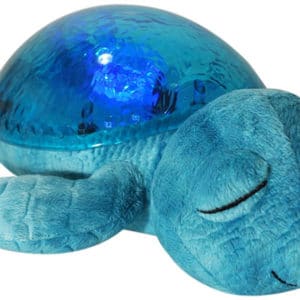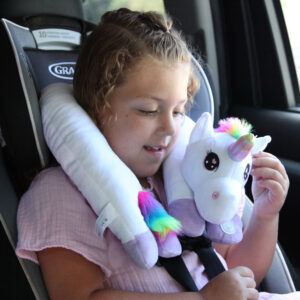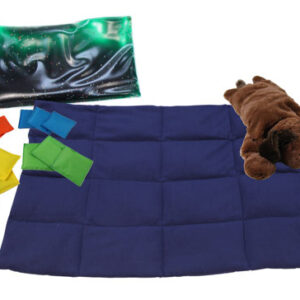Providing Calmness
-
Tranquil Turtle – UnadaptedSKU #4083Evoking a magical underwater effect, this fuzzy friend is a calming influence on everyone he meets!$59.95
Add to cart
-
Unicorn Vibrating Neck PillowSKU #3164Drape this adorable unicorn around your neck and experience soothing vibrations that reduce anxiety and promote focus and attention in the classroom and at home.$35.95
Add to cart
-
UV Reactive Fiber Optic SpraysSKU #3965Fabulous fiber optic lighting with 100 strands in six different colors. Under ultraviolet black light, the strands glow dramatically.$989.95
Add to cart
-
Vibrating PillowSKU #460WOur vibrating pillow is an all-time bestseller. The pillow springs into action when activated by an external capability switch. The soothing vibration is great for stimulating tactile awareness and for relieving stress. (Read more below)$41.95 – $69.95
Select options This product has multiple variants. The options may be chosen on the product page
-
Weighted BlanketsSKU #3941WCozy and comforting, our weighted blankets enhance sensory integration, improve concentration and attention.$87.95 – $140.95
Select options This product has multiple variants. The options may be chosen on the product page
-
Weighted KitSKU #7024Weighted products such as the selection in this kit, provide sensory input that helps students with sensory processing disorders improve their attention and concentration.$209.95
Add to cart
-
Weighted PuppySKU #3937A therapy dog that never needs to be walked! Just wrap this soft weighted pup around your neck and shoulders to experience calming pressure that helps with self-regulation, attention and concentration.$52.95
Add to cart
Roots of Anxiousness and Fidgeting
Most people experience anxiousness occasionally, such as before a speech or important test. But some people experience feelings of anxiety that persist or seem extreme for the situation. These anxious responses could be related to a mental health disorder or disability.
Many children with disabilities experience intense anxiety. Children with Autism Spectrum Disorder (ASD), for example, may be anxious about changing routines or overwhelmed by certain sensory stimuli. Children with anxiety disorders may also experience symptoms that make learning and functioning difficult. In both cases, anxiousness may present as a desire to escape the situation, difficulty focusing or fidgeting.
Things Parents, Caregivers and Educators Should Know About Calming a Child
A child who is experiencing anxiety may struggle to focus, be more sensitive to touch or fidget excessively. In some situations, adults can mistake these symptoms for poor behavior. The important thing for parents, caregivers and educators to remember is that a child’s distress feels very serious to them. Even if their response seems overblown to surrounding adults, children need to feel acknowledged in their feelings.
In order to support a child or student who is experiencing anxiety, you can express your understanding and offer help.
Ways to Calm Anxiety
You can help someone calm their anxiety in a number of different ways. Simple options can include stepping away from the stressful stimulus, practicing breathing and developing ways to cope with difficult situations.
People with anxiety disorders may benefit from working with a professional. Cognitive behavioral therapy (CBT) can help kids manage their anxiety and respond with more positive behavior.
Kids with ASD may also benefit from treatment for anxiety, although CBT may not be as effective for some kids on the autism spectrum. In the short-term, adults can guide children in dealing with their anxiety and provide calming sensory toys to promote relaxation.
How Sensory Toys Can Calm Anxiety
Sensory toys are designed to provide a specific kind of sensory input. To relieve stress and anxiety, some schools and organizations design entire sensory rooms to provide a variety of calming stimuli for children and adults.
Sensory toys can calm children by providing something external to focus on. Interesting colors, shapes, textures and sounds draw attention away from distress and bring people back to a relaxed state. Fidget toys may also help calm anxiety by providing an outlet for energy.
Many sensory toys also provide proprioceptive input, the kind of sensory input that lets us know where our bodies are in space. Weighted toys and lap mats can provide this kind of input to help kids on the autism spectrum calm sensory overload.
How to Select the Right Calming Sensory Toy
To select the right sensory toy, you’ll want to think about who will be using it. Adults and children with anxiety and autism have individual preferences about what kind of sensory input they do and don’t like. Talking to the child and observing what kind of stimuli they gravitate toward can make all the difference.
You may also consider where the child will use the toy. Some toys work well for at-home exploration but could cause distractions in classrooms. Enabling Devices offers calming toys that fit in a variety of settings, from classroom fidget kits to calming light projectors.
Have a Toy in Mind That You Don’t See? We May Be Able to Make It for You!
At Enabling Devices, we’re dedicated to helping people of all ages and abilities reach their goals and live fulfilling lives. To further this mission, we make hundreds of unique products for people with disabilities, including toys to help calm adults and children with anxiety, autism and other disabilities.
We also know that every person has unique needs. If you have a toy in mind and don’t see it offered, reach out to us! We frequently work with individuals to design products that meet specific needs, so we may be able to make it for you.








